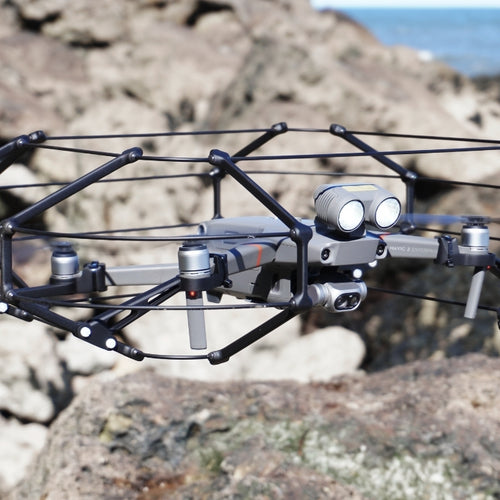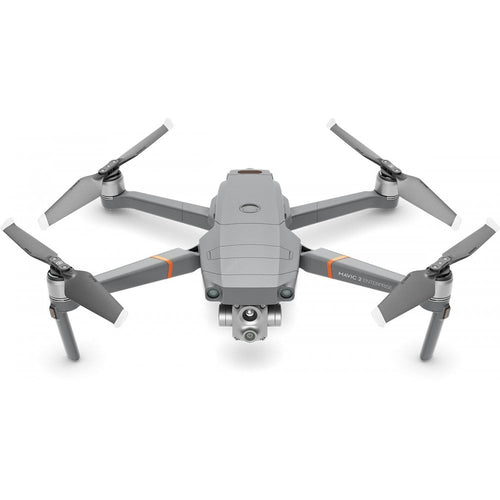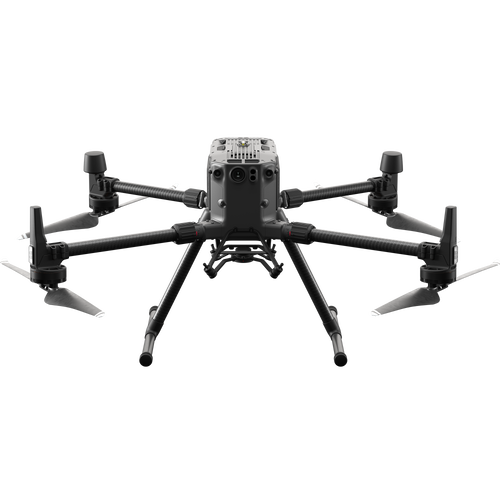
- London Fire Brigade praises the heliguy™ Mavic 2 Drone Cage, saying it is ideal for internal inspections and now makes certain missions possible;
- The cage is a versatile tool and LFB is using it in conjunction with a gas sensor to help internal gas inspection missions;
- LFB’s drone programme consists of four drones - including M300 RTK - which are being deployed for vital situational awareness.
London Fire Brigade - one of the largest firefighting and rescue organisations in the world - has endorsed the heliguy™ Mavic 2 Drone Cage, saying it makes ‘previously impossible operations possible’.
As this video from LFB shows, the collision-proof frame - suitable for all Mavic 2 Series drones - provides the aircraft 360° protection, and is especially suited to internal inspection BVLOS (beyond visual line of sight) missions.
The footage also demonstrates how the spotlight module on the Mavic 2 Enterprise Series can be utilised to illuminate areas during confined-space operations.
Lee Newman, LFB’s Drone Project Manager, said: “The cage works really well for the drone and what we need it for, and it makes previously impossible operations possible.

“The drone cage is ideal for internal inspections within a collapsed structure or within a building that’s smoke-filled to help gauge internal temperatures.
“As a test, and as the above video shows, we successfully flew the Mavic 2 Enterprise and cage in a training house, BVLOS, using the cage to bump off the walls and fly around inside and then come out again. This is an example of how the cage protects the drone in confined spaces and makes certain operations possible for us.”

A versatile tool, this image shows how LFB is set to utilise the cage as part of an internal gas-detection solution, using it in conjunction with a gas sensor strapped to the aircraft.

Station Officer Newman said: “We like to try new things and I’ve seen a DJI M210 with a gas detector strapped to it, so I decided to try it on our Mavic 2 Enterprise - and it worked perfectly.
“Using this in conjunction with the drone cage enables internal gas detecting, and the gas sensor can be used at the same time as image collection.”
LFB is using the cage with the Mavic 2 Enterprise Dual - which Station Officer Newman says is ‘superb for what we need it for’ - but plans to upgrade the aircraft to the more recent Mavic 2 Enterprise Advanced, which has superior specs, including a higher-resolution thermal sensor.
| Mavic 2 Enterprise Advanced | Mavic 2 Enterprise Dual | |
| Visual Camera | 48 MP; ½” CMOS; 32x digital zoom. |
12 MP; 1/2.3” CMOS; 4x digital zoom. |
| Thermal Sensor | 640 x 512 px thermal resolution with radiometric sensor; 30Hz frame rate; Dedicated 16x thermal zoom; R-JPEG. |
160 x 120 px thermal resolution; 9Hz frame rate; No dedicated thermal zoom; JPEG. |
London Fire Brigade’s Drone Programme
The cage is being deployed as part of LFB’s rapidly-expanding drone programme, which now consists of eight pilots, who have been trained by heliguy™ instructors.

Station Officer Newman said: “We have four drones with different capabilities and are on call 24/7.
“The drones have massively increased situational awareness for the incident commanders, and the footage is used by a large portion of the fire service, including fire investigation and fire safety.”
For instance, this image, captured using the DJI M300 RTK with the H20T payload, shows how the thermal sensor can aid London Fire Brigade crews, providing vital insights to shape decision-making and keep officers safe.

Station Officer Newman said: “Whilst on jobs, we can use drones to help see any potential risks that firefighters may not be aware of. Working in partnership with the Incident Commander can help mitigate any harm occurring by giving them up-to-date information of the incident and where the firefighters are working.”





Leave a comment